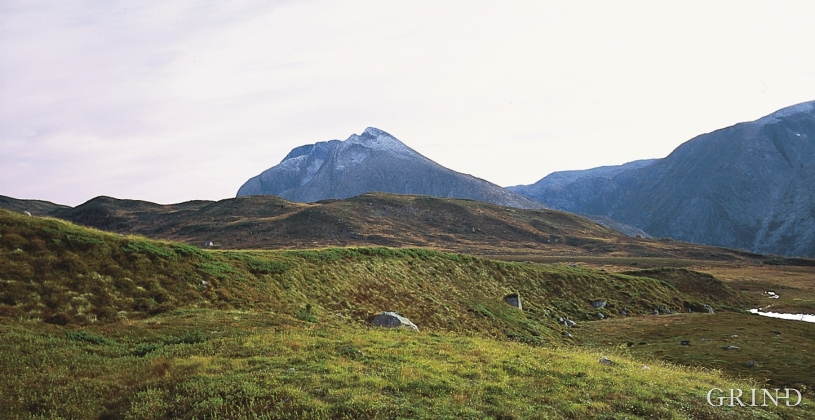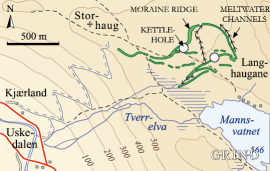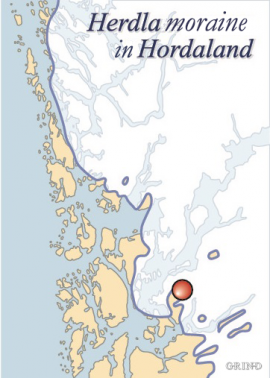Published: 20.07.2015 | Author: Inge Aarseth
Langhaugane, Ulvanosa in the background. (Svein Nord)
THE MORAINE RIDGES AT LANGHAUGANE
Langhaugane (600 mosl.) on the mountain east of Uskedalen centre may seem strange, as they twist along like a snake for over a kilometre on the plateau on the north side of Mannsvatnet Lake. There are several parallel ridges up to 10 metres high, with big blocks on the surface. The ridges are good examples of what is known as a side moraine. Side moraines are loose masses of sediment, mostly gravel, stones and blocks, that lie at the sides of glaciers. The glacier that deposited them came from the area around Foglefonna and sent glacial arms down through the valleys. On the plateau by Mannsvatnet Lake the glacier plucked gravel and stone along the west side of Solfjellet Mountain. The valley glacier then advanced down the south side of Storhaug and merged with the Hardangerfjord glacier, where it built up an end moraine on Halsnøy Island about 11 500 years years ago.
In the ridges one sees erosion channels from the glacial meltwater (arrows) that carved its way through them, and stagnant ice depressions, kettle holes (round symbol) which are depressions formed when big clumps of ice, that were buried in the loose deposits, melted.





